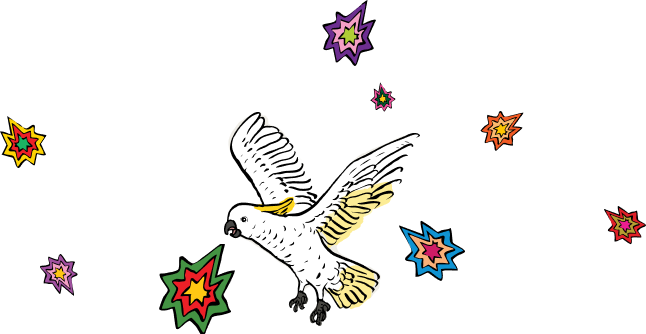BankSA Fringe Corner 2021. Photo: Chloe Elizabeth, 2021
Not only is Adelaide Fringe South Australia’s most popular major event, it’s also the state’s most productive – with a return on investment that is unequalled by any other arts, cultural or sporting initiative – according to a new independent report by PwC Australia.
The report – an analysis of comparative and potential future economic impact of the Fringe – found the festival generated in excess of $30 of gross economic impact for every dollar provided by the South Australian Government. It also showed that for every ticket sold at Fringe, the SA Government invests approximately $3, while other major SA events analysed received between $10 and $100 of support per ticket sold.
With the harsh blow of the pandemic denting Adelaide Fringe’s momentum, and with PwC Australia’s modelling, the report showed that in this new economic environment Fringe will struggle to return to pre-COVID levels without increased investment.
The SA Government currently injects an annual $2.4 million into the Fringe, but with an additional $2 million a year – taking the annual operating grant to $4.4 million per year – it would allow the festival to rebound and continue delivering economic and social returns to the state that significantly exceed pre-COVID results.
If additional funds are secured, PwC Australia forecasts that Adelaide Fringe would deliver a staggering $160 million annual gross economic expenditure in South Australia by 2025. This means for every $1 million of State Government funding, the Fringe would return almost $40 million of gross economic impact.
Adelaide Fringe Director and CEO Heather Croall said that for the Fringe to continue to deliver a high return on investment to South Australia, additional support was needed. She said it would ensure cash flow to artists, attracting visitors from new markets and territories, while delivering excellent value to the state.
“Adelaide Fringe is the largest festival in the Southern Hemisphere and we need to maintain SA’s competitive advantage in this area. We believe this PwC Australia report presents a compelling case on how to bounce back from COVID and return even more cultural, social and economic value to our state. With this, we have a plan of how we can build back better than ever before,” Ms Croall said.
“The modelling from PwC Australia shows we can turn an additional $2 million of annual funding into an event that will generate a staggering $160 million per year in gross economic impact.
“There is also significant scope to increase ticket sales at Fringe and huge room for visitor growth. We aim to triple the number of tourists at our festival."
“The Fringe currently sells around half the available tickets in our annual inventory so there’s massive room for growth – Adelaide Fringe can grow to sell more than a million tickets each year, which would cement our position as the biggest festival in the Southern Hemisphere. With this increased funding we would be able to significantly grow tourist numbers and deliver a 40:1 return on investment to the state.”
Tourism Industry Council of South Australia (TiCSA) CEO Shaun de Bruyn said tourism providers would welcome growth in visitor numbers during the month long festival.
“TiCSA strongly supports increased investment into the Fringe as it will help grow tourism numbers and visitor expenditure to the state in February and March. There is huge potential to grow visitor numbers and ultimately create many new jobs during this period,” he said.
2022 Adelaide Fringe will run from February 18 to March 20. For more information, visit adelaidefringe.com.au
MEDIA CONTACT:
Natalie Farinola | natalie@jpmedia.com.au | 0401 308 328
Lauren Ralph | lauren@jpmedia.com.au | 0432 040 519
Key Adelaide Fringe stats:
- Adelaide Fringe provides 266 full-time equivalent local jobs annually and over 4,000 jobs directly and indirectly during the event.
- State annual operating grant change in 2012 drove a 35 per cent increase in gross economic expenditure in 2013.
- State annual operating grant change after 2017 drove a 15 per cent increase in 2018.
- In COVID times of 2021, Fringe generated $31.6 million net new expenditure (tourist spend) in SA, down from $41.6 million in 2020; the decrease due to national and international border restrictions.
- In COVID times of 2021, Adelaide Fringe generated $56.4 million gross expenditure in SA, down from $96.7 million in 2020. Gross expenditure was growing year-on-year until COVID dented the momentum.
- In 2021, Fringe attracted 26,649 visitors to the state, down from 32,433 from 2020, generally reflecting restricted travel conditions due to COVID. Fringe will use investment to dramatically grow tourist numbers.
- Without additional Government support, it is forecast that the Fringe will struggle to overcome the outlined challenges and return to pre-COVID economic impacts.
- The report shows with an additional half a million a year of funding, estimated gross expenditure supported by the Fringe reaches over $80 million in 2025. With an additional $2 million a year funding, estimated gross expenditure supported by the Fringe reaches over $160 million in 2025.
InDaily have written an article about the PwC report which you can read here
Read the full PwC report here



.jpg)

